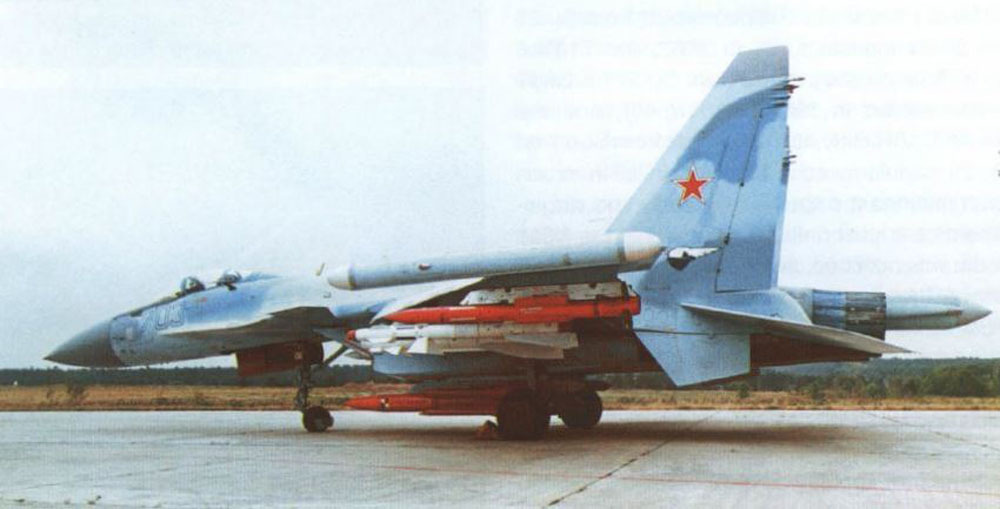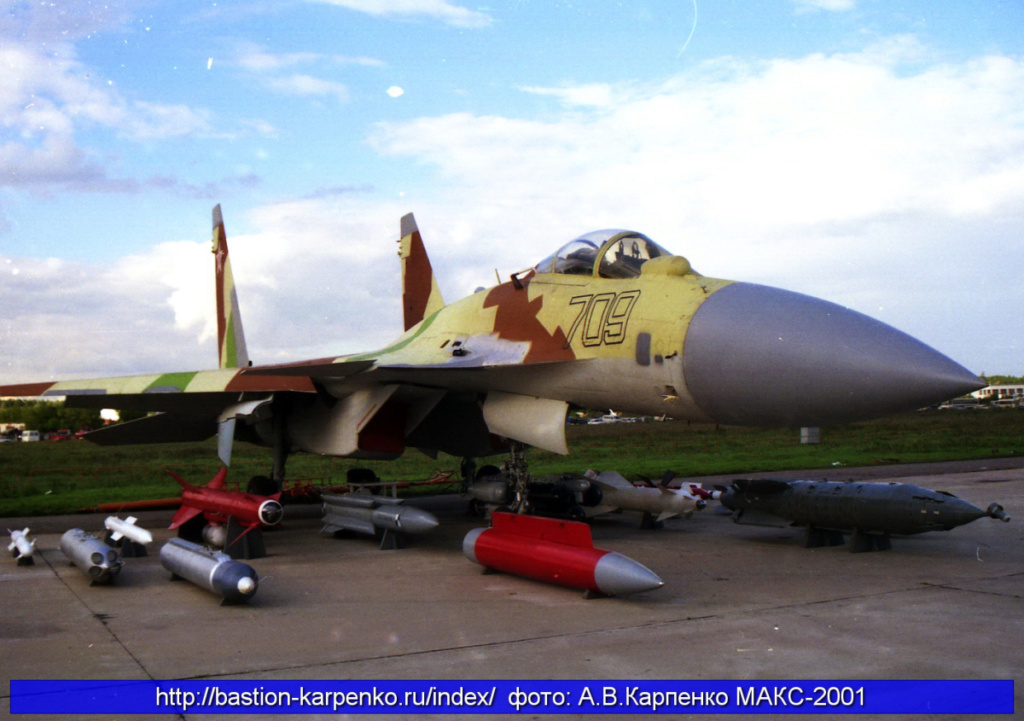But I don't understand... the bigger more powerful Su-27s should not have been surprised by those MiGs like that... doesn't it have bigger radar and IRST and it will do all the attacking from long range where the MiG is vulnerable and useless?
Eritrea in mountainous region, so MiGs are waiting for them in radar shadow. but when they pop up, Sukhois pick them up and react. First they evade missiles and than fire back.
Yeah, because while they can make Su-27s compatible it is too hard to make MiGs compatible even though they did it with the MiG-31....
For goodness sake... the MiGs didn't have it because they didn't need it.... do you really think that is the reason they didn't buy more MiGs?
Apart from this datalink sharing thing the Flankers did they were otherwise inferior to the upgrades MIG was developing and getting rejected by the Russian Air Force for.
In the eighties electrinics take some space and have its weight. MiG-31 and Su-27 were big enough to install this equipment inside. MiG-29 have only standard Lazur complex for GCI guiding. This is not situational avarenes, only vectoring to position to launch missiles against designated target. MiG-29 was depending on its own radar to see what is happening around him, while Su-27 could turn off his radar and got picture from group leader or AWACS.
I'm not sure, why are you comparing standard Su-27 with MiG-29M? Standard Su-27 should be compared with standard MiG-29. MiG-29M has his counterpart in Su-27M, which was developed in the same time. Su-27M was later renamed in Su-35 and 10 prototypes were built. The 11th prototype was the first with TVC and called Su-37. Su-27M was also multirole and the basis for Su-30 and today Su-35. Russian air force in the nineties cancel both, because they didn't have money for either. Money shortage was also reason to cancel MiG-31M.


MiG-29M from the nineties

Su-27M from the nineties
Or were they waiting for a suitable MiG to start buying and have only gotten till now to get one. They took the SMT fighters when they became available... they were not obliged to... they could have offered them to India or some other country at a reduced price if they really didn't want them. The Navy bought the naval Fulcrums pretty quickly when India bought theirs... it seems when they get the opportunity to get them cheaper they are taking them... but no matter how cheap they were if they didn't want them I don't think they would take them at any price.
RuAF buy MiG-29SMT, because Algeria reject them and Russia need planes in flying condition in the beginning of 2000. At the same time RuAF decide to modernize two regiments of Su-27 to Su-27SM and order 12 new Su-27SM3 and 4 Su-30M2 from KNAAPO. Later they buy additional 16 Su-30M2. Before that, they cancel program of Su-30KN and upgrading of Su-27UB to Su-27UBM from Irkut because of money shortage (war in Chechnya). Later RuAF buy 16 MiG-29SMT/UBT from MiG, which were made from unfinnished airframes. As you know, ex-Algerian MiG-29SMT are now retired and replaced with Su-30SM. Most probably they will be sold to India (21 MiG-29UPG).
The MiG-29SMT didn't fit well into the force in Syria because they weren't integrated into the Russian mobile network system is no great surprise... they were designed and made for Algeria... why would they be linked in with Russian AF equipment... the real question you should ask is why are the RuAF so cheap or so stupid as to not upgrade the SMTS to operate with their other systems when they took them over... really sounds like a level playing field...
Ex-Algerian MiG-29SMT was never in Syria. MiG-29SMTs, which went to Syria were from batch of 16, which were produced in MiG for RuAF from unfinnished air fames. They are not export, they are domestic ones and have some differences and updates comparing to export ones.
If that were true why would they by MiG-29s in the first place... they already chose the Su-33... why bother with a smaller lighter shorter ranged aircraft... like the USN did when they replaced their F-14s with F-18s?
MiG-29K was in production in that time for India, Su-33 was not in production anymore. KNAAPO in that time produce Su-30MK2 for export and Su-35. When Su-30MK2 is finnished, they remade that production line for Su-57. Russian NAVY want to replace Su-33 with new build planes, which will serve on carrier till the end of its life time. Navy use Syrian operation to test them both in real combat experience and decide to keep and modernize Su-33. Kuznetsov is now in process of upgrading and remaking for MiG-29K. When she will return to servis is another question. Kuznetsov is quite rare on the sea, so MiG-29KR will be just fine for her. Su-33 will most probably take other duties in the north and will go to Kuznetsov, when needed.
USN didn't decide to replace F-14 with F/A-18. It was political decision from Bush government to retire and destroy them to prevent smuggling of spare parts for F-14 to Iran. USN still miss Tomcats, specially F-14D, as F/A-18E/F are not the best replacement for them. F-14D was practically the same or even better than F-15E.
You might be a bit confused... but Russia does not have enough AWACS platforms to control all her fighters and the ground based IADS is already very extensive anyway. Considering the Russians are working on super long range weapons to shoot down AWACS platforms how long before HATO does the same... does it really make a lot of sense moving from a ground based control system to a super vulnerable and super expensive air based one?
Absolutely RuAF is full integrated in IADS, but it is only in Russia and it doesn't cover well whole Russian territory. After the fall of USSR, IADS in Arctic, Siberia and Far East practically dissapear and now Russian military is building it again with placing new radars, command centers, SAM brigades, rebuilding of airbases, etc. Outside IADS air force is depending on AWACS planes and networking to share picture between themselves. Situation is improving and RuAF also learn important lessons from this hard times period.











 Isos
Isos





